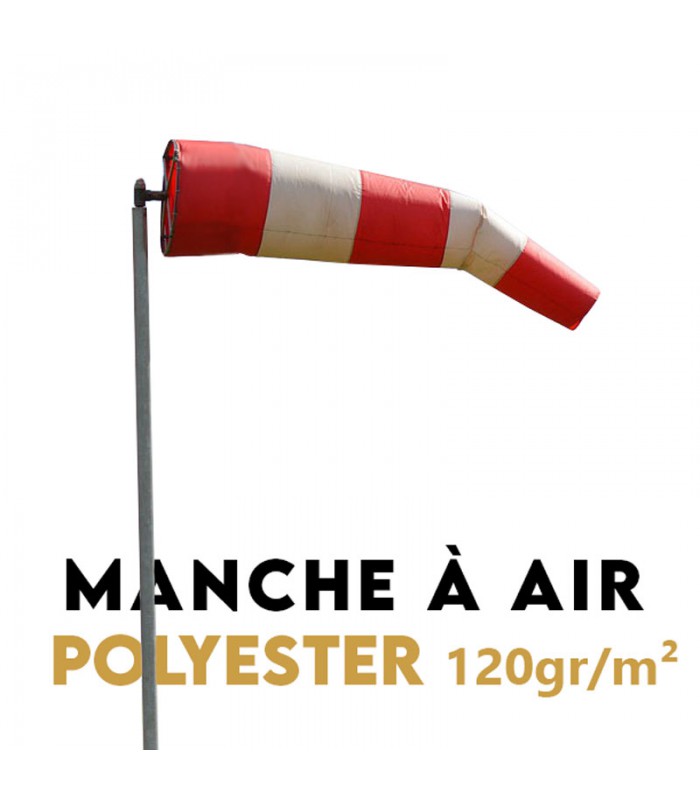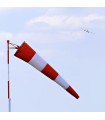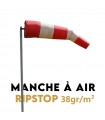A quality windsock
Also known as wind socks, windsocks allow you to estimate wind direction and measure wind speed. Made from 120gr/m² polyester, they are wind, weather and UV resistant.
Size: Ø 0.3m x 1m / Ø 0.3m x 1m20 / Ø 0.3m x 1m80 / Ø 0.4m x 2.50m / Ø 0.5m 2.25m / Ø 0.6m x 2.40
Resistance: Very high
Environment: Wet or dry, with low to extreme wind values
Use: Unofficial heliports/airfields, construction sites, freeways, paragliding, kites, etc.![]() Windsock entirely made in France .
Windsock entirely made in France .
Sizing guide
A 100% French windsock
Exceptional materials
The 120gr/m² polyester windsock is entirely made in France. By virtue of its function, it is destined to spend its life outdoors. That's why, to guarantee a long life, it's made from high-quality materials. With a grammage of 120gr/m², the polyester used is perfectly resistant to humidity, wind and UV rays.
Thanks to its eyelet fastening system, it's also easy to attach to the top of the mast.
Read the wind with a 120gr/m² polyester windsock
A windsock is a device used to assess wind direction. Unlike a wind vane, it also indicates wind speed. This is achieved by using the 5 alternating colored rings that make up the windsock. Each ring, when inflated, corresponds to approximately 5 knots (9km/h). When the sleeve is fully inflated, the wind is estimated to be blowing at over 25 knots (45 km/h).
Not widely known, this second use nevertheless provides only a simple estimate. For greater accuracy, the use of an anemometer is strongly recommended.
How to use the 120gr/m² polyester windsock?
Sizes to suit your activity
Our 120gr/m² polyester windsocks come in a range of sizes to suit your use and location:
| Dimensions | Recommended use |
|---|---|
|
Beach, Small construction site, Terrace.. |
|
Heliports-Helisurfaces-Unofficial aerodromes, Construction sites |
Codified and supervised use
Recommended in some places, it's important to know that windsocks are also compulsory in others.
Airports and aerodromes, for example, are places where windsocks are indispensable. In these places, their use is governed by regulations. They must comply with the rules of the International Civil Aviation Organization (ICAO), and therefore meet the STNA standard. Hospitals with heliports are also required to fit windsocks to indicate wind strength and direction to pilots.
Large construction sites and SEVESO sites are also suitable for this type of device. In fact, SEVESO factories, as industrial installations and within the framework of regulations on classified installations, are obliged to install a device indicating wind direction (Instruction of 4/9/1970, circular of 24/7/72)
Finally, windsocks can also be found along freeways. Often accompanied by a sign indicating the risk of strong side winds, they enable road users to adapt their driving to avoid any wind-related danger. In the context of road signage, they belong to the sub-family of type J beacons.





















